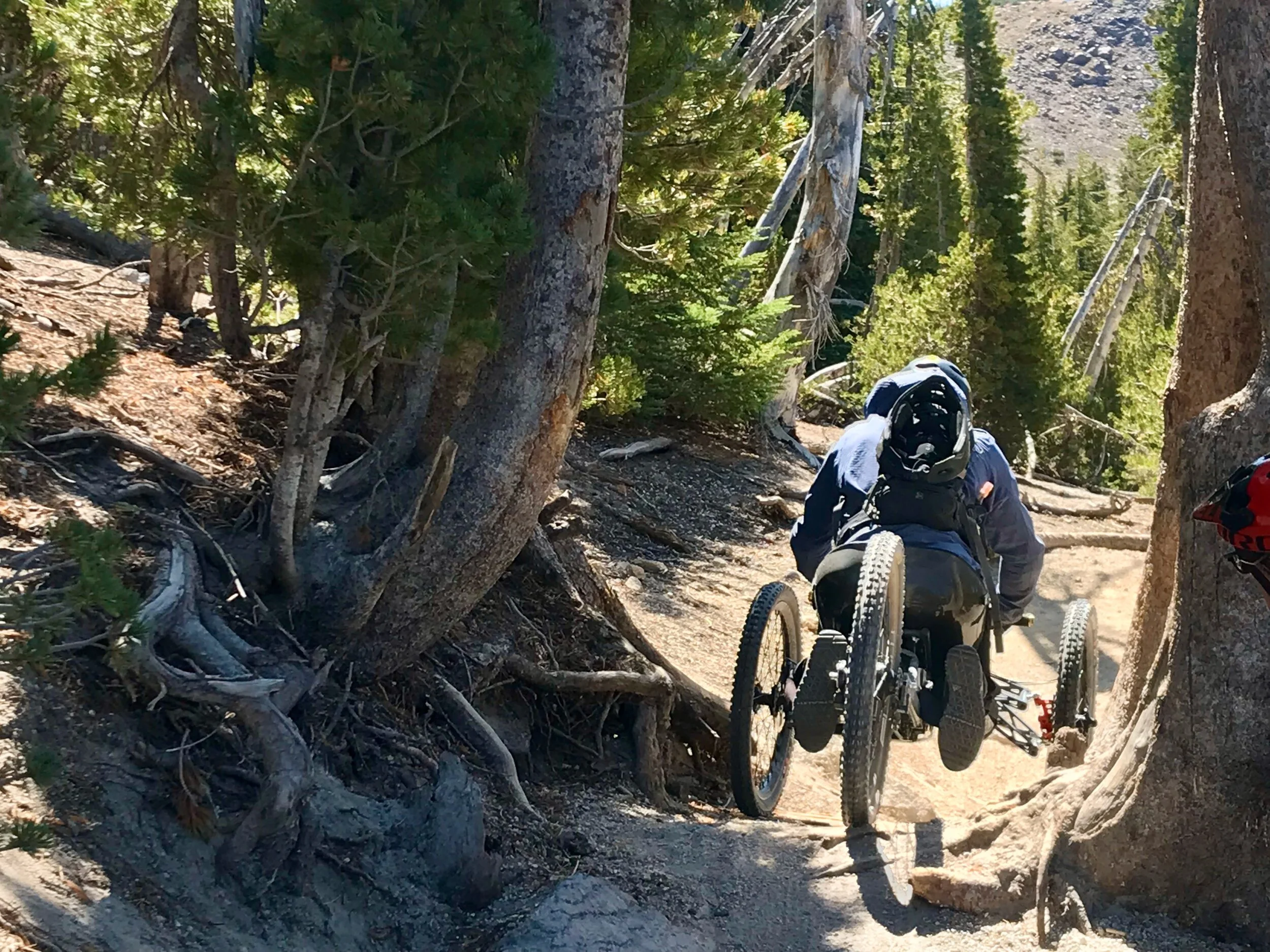SAFETY RULE #1 OF ADAPTIVE MOUNTAIN BIKING
NEVER EXPLORE NEW SINGLE TRACK FOR THE FIRST TIME ALONE.
BE SAFE. NOW GO RIDE!
This system is designed to answer one question for solo adaptive riders: Is support needed or not? For riders with support, it is intended to direct to the best trail experience. It is also graded on a curve, providing a rating of what MOST, not all, adaptive riders will encounter. Riders in the extremes of disability level, ability level and/or equipment capability, may need to shift the scale. For further information please consult our trail blog, our trail videos, recommended routes and your preferred trail information resource.
AMTB 1 - No support needed
AMTB 2 - Support recommended
AMTB 3 - support needed
+ Minimal Trail Standards - Friendly for ALL aMTBs
x Requiring Extra Skill or Practice - Advanced Features - Technical Terrain
NOTE: A trail requiring more than one support rider, support for more than 20% of the trail, separation from a rider’s equipment, or extra equipment, is deemed expedition level and therefore not suitable for aMTB by the standards of this system. We understand that anything is passable with a crew, gear, proper planning and determination, but the goal of this project is to direct adaptive riders onto trails and routes that provide the best experience for mountain biking, not mountaineering.
Rating on a Curve
To serve the largest number of trail users, we rate trails on a curve. When rating trails, we consider the average rider based on a formula of Ability Level combined with Equipment Capability (see criteria below) and make our best estimate on what the majority (70%) of riders will encounter. Riders in the extremes may need to shift the scale to the left or right, based on the ability level and equipment capability equation. For example: A rider with expert ability and extremely capable equipment will shift the curve to the left. Some trails that are rated aMTB2 will then be aMTB1 for them. The opposite is true for riders at the other end of the spectrum.
equipment capability
Certain criteria increase the capability of adaptive equipment to navigate potential trail challenges. These include, but are not limited to:
Rear Wheel Drive
Power Assist
Suspension
Clearance
Ability to Angulate
Stance Width
Skid Plate

